Loud vs Clear Audio
Loud vs Clear Audio – Why Clarity Always Wins at Events
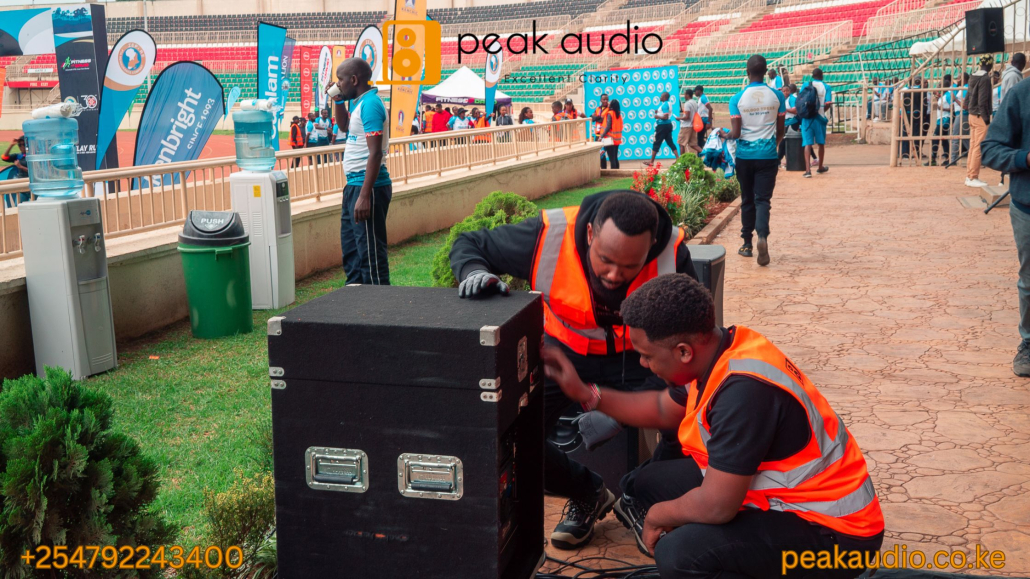
Loud vs. Clear Audio
When planning an event, it’s easy to fall into the trap of thinking volume is the ultimate solution—after all, if it’s loud, everyone must hear it, right? The truth is, loudness alone can often create more problems than it solves. High volume without balance can lead to distortion, audience fatigue, and even discomfort, making it harder for guests to engage with the content. Clear audio, on the other hand, ensures that every word, note, and sound effect is delivered with precision, allowing listeners to fully connect with the message or performance.
Clarity comes from a well-designed sound system, proper microphone techniques, and professional mixing that tailors the audio to the venue’s acoustics. This approach prioritizes balanced frequencies, reduced echo, and consistent volume levels across the space. Instead of bombarding the audience with sheer power, clarity gives them the ability to focus on the details—the tone of a speaker’s voice, the nuances of live music, or the crisp timing of sound effects—all without strain or distraction.
Ultimately, events succeed when attendees leave with the message or emotion you intended, and that’s only possible when they hear and understand everything clearly. Loud sound may grab attention for a moment, but clear sound holds it for the entire event. By prioritizing clarity over raw volume, you create an environment where your audience feels comfortable, engaged, and impressed—making your event not just heard, but remembered.
1. Loud Audio — The Common Misconception
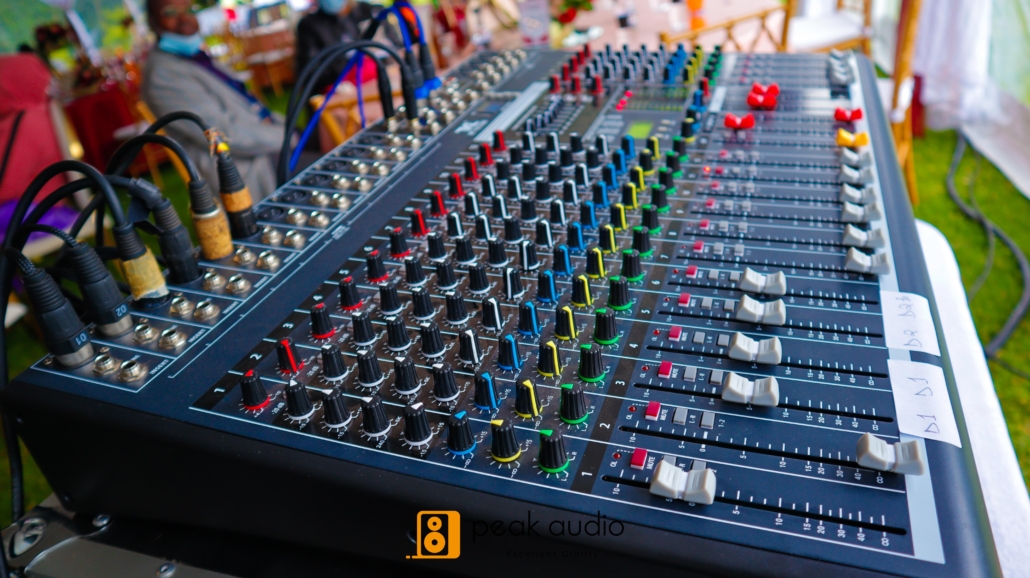
Loud and. Clear Audio for events
Many event organizers believe that louder audio automatically translates to better audience engagement. While high volume can project sound across a venue, it does not guarantee clarity, quality, or an enjoyable listening experience. Understanding the distinction between loudness and sound quality is essential for delivering professional, immersive audio at events.
1.1 Definition and Basics — What Loud Audio Really Means
Loud audio simply refers to sound played at high volume levels, often amplified to ensure that a message, music, or performance reaches a large audience.
-
Volume Over Precision – Loud audio focuses primarily on the amplitude of sound rather than its clarity, tone, or balance.
-
Amplification – Speakers and sound systems are pushed to higher output levels to cover larger spaces or overcome ambient noise.
-
Common Misconception – Many assume that louder means better, overlooking the nuances of audio quality that impact audience comprehension and engagement.
While loud audio can fill a room, it is only one aspect of effective sound design.
1.2 Why High Volume Alone Is Not Enough
Simply turning up the volume does not guarantee that attendees will understand or enjoy the audio.
-
Distortion Risk – Excessive volume can lead to audio distortion, making speech or music sound harsh and unclear.
-
Reduced Comprehension – Critical details in presentations, lyrics, or spoken instructions may be lost if clarity is sacrificed for loudness.
-
Balance Matters – Proper mixing of bass, mids, and treble ensures that sound is both loud enough to reach the audience and clear enough to be easily understood.
-
Engagement Over Noise – Listeners respond better to well-balanced, intelligible audio than simply loud sound.
High volume without quality control can negatively impact the audience experience.
1.3 Potential Downsides of Excessive Loudness
Over-amplifying sound can create discomfort and reduce audience engagement.
-
Listener Fatigue – Prolonged exposure to very loud audio can be tiring, causing audiences to lose focus.
-
Ear Discomfort & Health Risks – Excessively high sound levels can strain hearing, leading to temporary discomfort or long-term hearing issues.
-
Audience Disengagement – If attendees struggle to understand content or find the audio overwhelming, they may tune out or leave the event.
-
Professional Impression – Poorly managed loud audio reflects negatively on event quality, detracting from the overall experience.
Managing volume with clarity and balance is essential to maintain audience comfort and engagement.
Loud audio alone does not guarantee a successful audio experience. While high volume can reach large audiences, it must be paired with clear, well-balanced sound to ensure comprehension, enjoyment, and engagement. Event organizers should focus on audio quality over sheer loudness, avoiding listener fatigue, discomfort, and audience disengagement. By prioritizing clarity and proper sound design, events can deliver professional, immersive audio that resonates with every attendee.
2. Clear Audio — The Gold Standard for Events
While loud audio draws attention, it is clear audio that truly defines a professional event experience. Clear audio prioritizes precision, balance, and intelligibility, ensuring that every speech, musical note, or sound effect is delivered seamlessly to the audience. In Kenya’s corporate, entertainment, and live event sectors, achieving clear audio is essential for maximizing engagement and leaving a lasting impression.
2.1 Definition and Principles — What Clear Audio Means
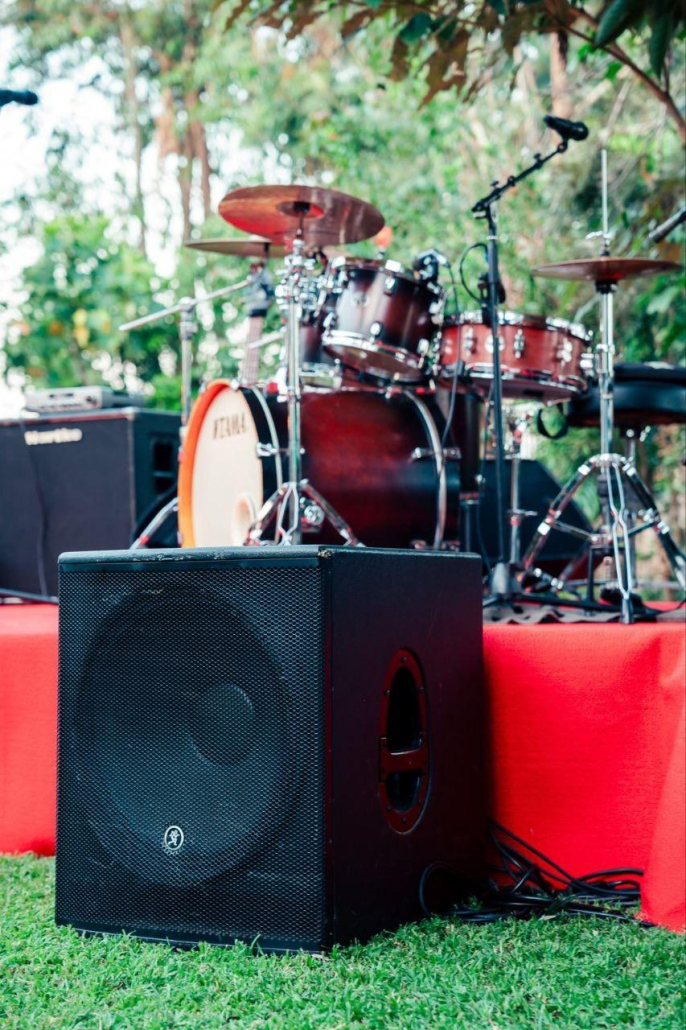
Loud and. Clear Audio
Clear audio focuses on delivering sound accurately and without distortion, so every word and musical element is distinct and intelligible.
-
Precision – Each instrument, voice, or sound effect is rendered faithfully, preserving the intended tone and dynamics.
-
Balance – Proper mixing ensures that bass, mids, and treble complement each other, creating a natural and immersive listening experience.
-
Minimal Distortion – Unlike loud audio that risks distortion, clear audio maintains fidelity even at higher volumes.
-
Consistency Across the Venue – Sound reaches every corner of the room evenly, so no audience segment is left struggling to hear.
By focusing on these principles, clear audio enhances both comprehension and enjoyment.
2.2 Why Clear Audio Is Crucial
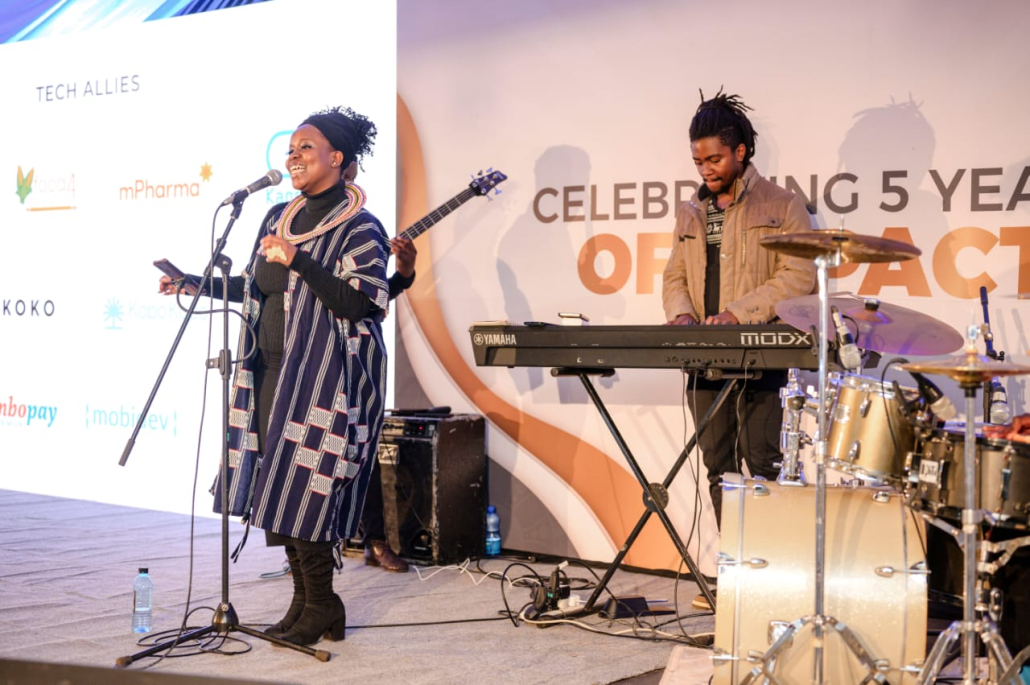
Loud and. Clear Audio
Delivering clear audio is critical to audience understanding, engagement, and overall satisfaction.
-
Enhanced Comprehension – Speeches, announcements, and instructions are easily understood, ensuring the event runs smoothly.
-
Music & Performance Appreciation – Attendees experience every nuance in live music or performances, increasing emotional connection and enjoyment.
-
Audience Engagement – Clear sound keeps listeners attentive and immersed, reducing distractions caused by poor audio quality.
-
Professional Impression – Well-managed, high-quality audio reflects positively on event organizers and performers, enhancing credibility.
Events with clear audio provide both functional clarity and emotional impact.
2.3 Audience Experience — Comfort, Connection, and Memory
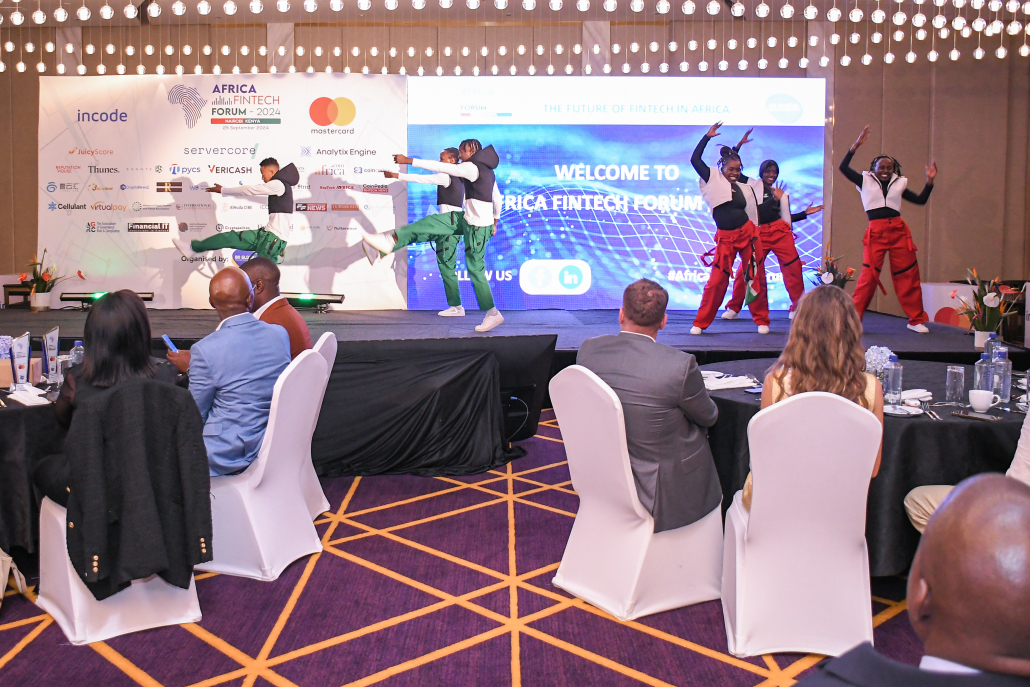
Loud and. Clear Audio
Clear audio directly improves how attendees perceive and remember an event.
-
Listener Comfort – Balanced sound prevents fatigue and discomfort, allowing audiences to stay engaged for longer periods.
-
Immersive Experience – Well-mixed audio envelops listeners, making them feel part of the performance or presentation.
-
Memorable Events – Clear audio leaves a lasting impression, reinforcing messaging, entertainment, and branding.
-
Positive Word-of-Mouth – Satisfied audiences are more likely to recommend the event, boosting reputation and future attendance.
By prioritizing clarity over sheer volume, events create meaningful, enjoyable experiences for every attendee.
Clear audio is the true benchmark of professional event sound. It ensures every word, note, and effect is delivered with precision, balance, and fidelity, enhancing audience understanding, comfort, and engagement. Unlike loud audio, which can overwhelm or distort, clear audio provides a seamless listening experience that elevates the event’s impact and memorability. For organizers in Kenya and beyond, investing in clear audio is key to delivering polished, immersive, and highly engaging events.
3. Balancing Loudness and Clarity
Achieving the perfect event audio requires more than just turning up the volume or relying solely on clarity. Balancing loudness with clarity ensures that sound reaches the entire audience while remaining intelligible and comfortable. This balance is critical for creating immersive, engaging, and professional audio experiences at events in Kenya and beyond.
3.1 Volume Control — Filling the Venue Without Overpowering

Loud and. Clear Audio
Proper volume management ensures that all attendees can hear the audio clearly without causing discomfort.
-
Optimal Sound Levels – Adjusting volume to suit the venue size, audience density, and ambient noise ensures consistent audibility throughout.
-
Avoiding Overpowering Sound – Excessive loudness can lead to distortion, listener fatigue, and disengagement, while too low a volume leaves audience members straining to hear.
-
Dynamic Adjustment – Volume can be varied for different segments of the event, such as speeches, musical performances, or multimedia presentations.
-
Audience-Centric Approach – Focusing on listener comfort ensures that the experience is enjoyable for everyone in attendance.
Effective volume control is the first step toward achieving a harmonious audio experience.
3.2 Equalization and Tuning — Enhancing Sound Quality
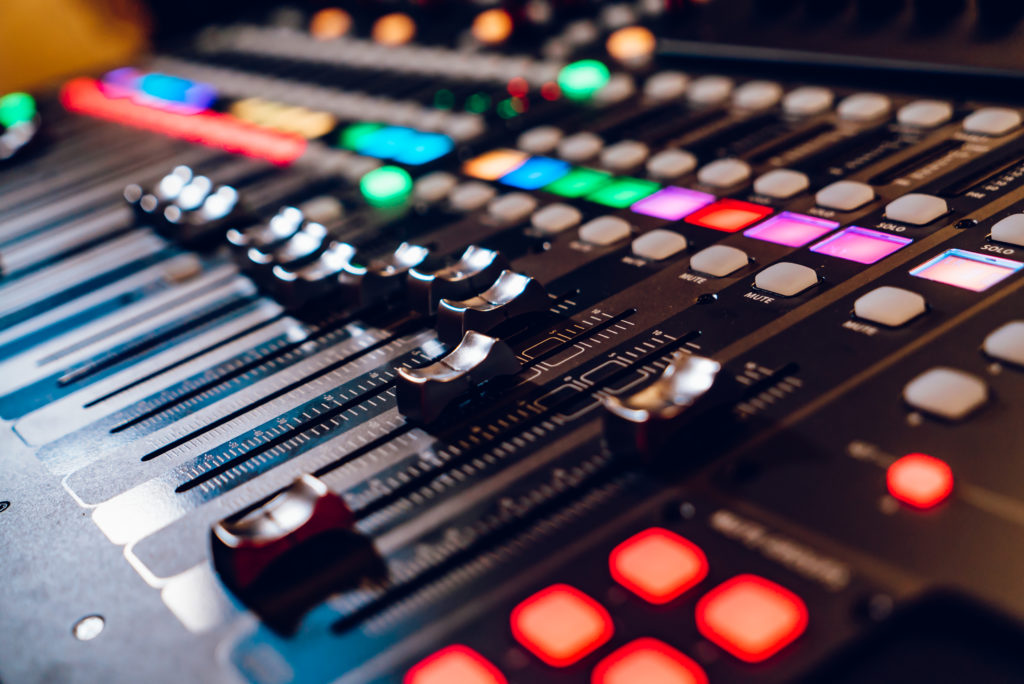
Loud and. Clear Audio
Equalization (EQ) and sound tuning refine audio by balancing frequencies to highlight important elements and reduce unwanted noise.
-
Frequency Adjustment – Boosting mids enhances vocal clarity, adjusting bass preserves depth, and controlling treble ensures brightness without harshness.
-
Noise Reduction – Eliminating feedback, hum, or resonance improves overall sound quality.
-
Instrument & Vocal Balance – Proper tuning ensures that music and speech are distinct and complement each other.
-
Tailored Sound Profiles – EQ settings can be customized for different venues, event types, and audio sources to deliver consistent clarity.
Equalization ensures that every sound is polished, intelligible, and enjoyable for the audience.
3.3 Speaker Placement — Strategic Positioning for Optimal Coverage

Loud and. Clear Audio
Correct speaker placement ensures even audio distribution and prevents areas from being too loud or too quiet.
-
Coverage Mapping – Speakers are positioned to cover the entire venue, accounting for seating arrangements, stage location, and acoustics.
-
Avoiding Dead Spots – Strategic placement minimizes areas where sound is weak or unclear.
-
Minimizing Overlap & Feedback – Proper spacing reduces phase cancellation and interference between speakers.
-
Enhanced Immersion – Balanced placement creates a consistent audio experience that envelops the audience without overwhelming any single area.
Thoughtful speaker placement is essential for combining loudness and clarity seamlessly across any venue.
Balancing loudness and clarity is key to delivering professional event audio. By carefully managing volume, applying equalization, and strategically positioning speakers, event organizers ensure sound reaches all attendees clearly and comfortably. This approach prevents distortion, listener fatigue, and disengagement, while creating an immersive, enjoyable audio experience. For Kenyan events, mastering this balance elevates presentations, performances, and overall audience satisfaction, leaving a lasting impression long after the event ends.
4. How Peak Audio Delivers Clear, Impactful Sound
Delivering exceptional audio requires more than just high volume; it demands precision, expertise, and cutting-edge technology. Peak Audio combines professional-grade equipment, experienced sound engineers, and highly tailored solutions to ensure every event in Kenya achieves immersive, high-fidelity sound. Whether it’s a corporate conference, wedding, concert, or hybrid event, Peak Audio ensures that audiences hear every word, musical note, and effect with crystal-clear clarity.
4.1 Professional Equipment — High-Quality Sound Systems for Clarity and Coverage
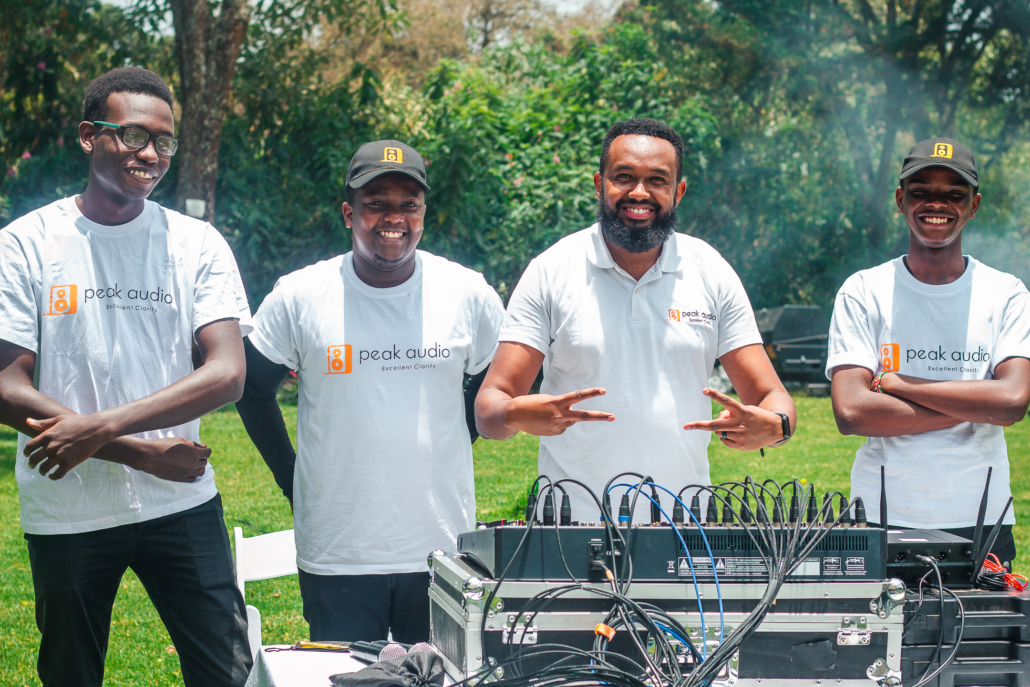
Loud and. Clear Audio
Peak Audio invests in advanced audio equipment designed to deliver clean, immersive sound across venues of all sizes.
-
Advanced Speakers & Amplifiers – Their speaker systems are engineered to produce a wide frequency range without distortion, ensuring that both low-end bass and high-frequency details are crisp and balanced. By using multiple speaker arrays strategically positioned, they achieve even coverage across small halls or large arenas.
-
Cutting-Edge Microphones – Peak Audio uses wireless, directional, and lapel microphones that capture vocals and instruments with precise detail. High-quality microphones reduce interference, minimize feedback, and maintain consistent audio levels even with movement on stage.
-
Audio Processors & Mixers – Sophisticated audio processors allow real-time adjustments to balance frequencies, compress dynamic ranges, and enhance sound clarity. Mixers give sound engineers full control over each channel, ensuring every instrument, voice, and effect blends harmoniously.
-
Reliable Redundancy Systems – Backup amplifiers, microphones, and cables ensure the event proceeds smoothly even if technical issues arise, eliminating disruptions that could compromise the audience experience.
Using professional-grade equipment ensures that sound quality is never sacrificed, even in challenging acoustic environments.
4.2 Expert Sound Engineers — Fine-Tuning Audio for Every Event

Loud and. Clear Audio
High-quality equipment alone is not enough; Peak Audio’s skilled sound engineers are essential in transforming technology into an immersive audio experience.
-
Precise Audio Calibration – Engineers analyze the venue’s acoustics and adjust volume, equalization (EQ), and audio processing to ensure clarity for every seat. They balance vocals, instruments, and ambient sounds to create a cohesive listening experience.
-
Continuous Live Monitoring – Technicians actively monitor sound throughout the event, making real-time adjustments to prevent distortion, feedback, or uneven coverage. This proactive approach guarantees consistent audio quality from start to finish.
-
Versatile Industry Expertise – Whether it’s a keynote speech, live musical performance, wedding ceremony, or hybrid conference, Peak Audio engineers understand the unique demands of each event type and adapt their techniques accordingly.
-
Audience-Centric Approach – Engineers focus on the listener’s perspective, ensuring comfortable sound levels, clear speech intelligibility, and immersive musical fidelity. They anticipate audience needs, creating an experience that feels effortless and polished.
The combination of technical expertise and live monitoring ensures that every event’s audio is precise, immersive, and professional.
4.3 Tailored Solutions — Custom Setups for Event Goals and Venue Needs
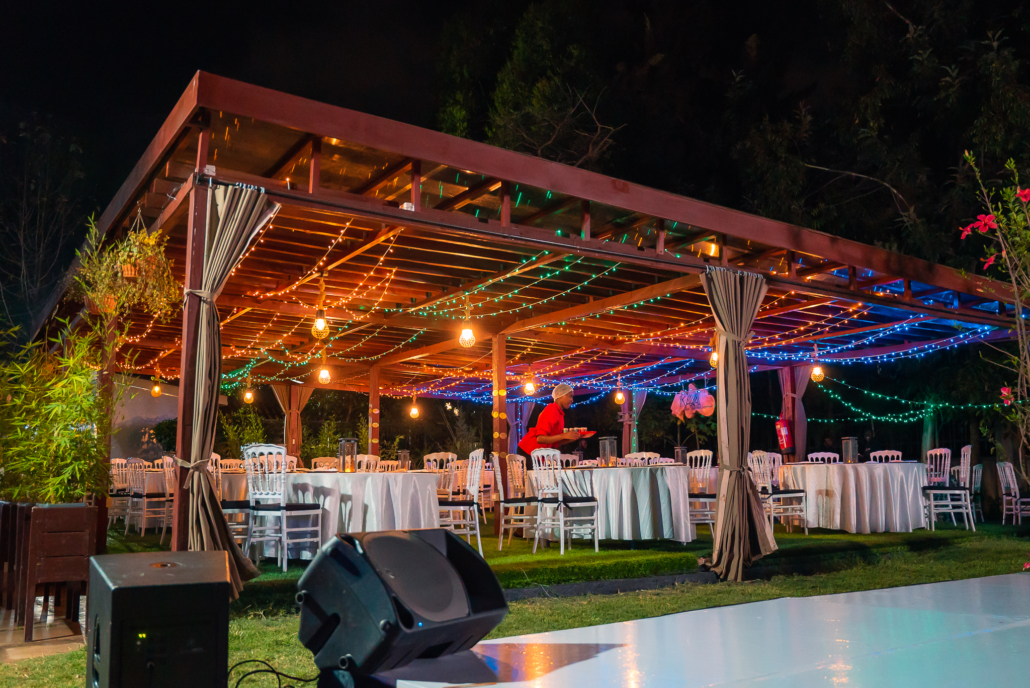
Loud and. Clear Audio
Every event has unique requirements, and Peak Audio provides fully customized audio solutions to match these needs.
-
Venue-Specific Design – Audio setups are tailored to each location, taking into account room size, architectural features, acoustic reflections, and audience layout. This prevents dead spots, reduces echo, and ensures consistent sound coverage across the venue.
-
Event Goals Alignment – Peak Audio designs setups to match the specific goals of the event, whether it’s delivering flawless speeches, creating an energetic music performance, or enhancing immersive hybrid experiences with remote audiences.
-
Flexible Configurations – Their solutions are scalable and adaptable, capable of handling small boardroom meetings, mid-sized conferences, outdoor festivals, or stadium concerts without compromising clarity or volume balance.
-
End-to-End Support – From initial planning to on-site installation, live event monitoring, and post-event audio review, Peak Audio provides a comprehensive service that guarantees seamless execution and peace of mind for organizers.
Customized setups ensure that every element of the audio experience—from clarity and coverage to tone and impact—is optimized for both audience satisfaction and event success.
Peak Audio delivers clear, impactful sound by integrating professional equipment, expert sound engineers, and fully tailored solutions. Their approach ensures that every audience member experiences high-fidelity, balanced, and immersive audio—whether attending in-person or remotely. By combining technology, expertise, and precision planning, Peak Audio elevates Kenyan events to world-class standards, creating memorable experiences where every word, note, and sound resonates perfectly.
Frequently Asked Questions (FAQs)
1. Why is clear audio more important than loud audio at events?
Clear audio is essential because it ensures comprehension, engagement, and audience comfort. Detailed points:
-
Intelligibility – Every word, instruction, and speech segment is clearly audible even in large or noisy venues.
-
Music and Performance Quality – Captures all nuances of live or recorded music, including bass, treble, and midrange details.
-
Audience Comfort – Prevents ear fatigue, headaches, or stress that can result from overly loud or distorted sound.
-
Engagement & Retention – A clear audio mix keeps attendees focused, responsive, and emotionally connected to the content.
-
Professional Image – Well-managed sound reinforces the credibility of organizers and the event’s quality.
-
Long-Term Impact – Clear audio ensures recordings or live streams are suitable for promotional use and archives.
2. How can I achieve even sound coverage in a large venue?
Ensuring consistent audio coverage requires a combination of planning, technology, and testing:
-
Venue Analysis – Evaluate the room’s size, shape, ceiling height, materials, and potential sound reflection or absorption points.
-
Speaker Distribution – Position main and delay speakers to cover all audience zones, including balconies and corners.
-
Volume Zoning – Adjust sound levels differently for front, middle, and back sections to maintain balance.
-
Equalization (EQ) Tuning – Use EQ to minimize echo, reduce muddiness, and enhance vocal or instrumental clarity.
-
Acoustic Treatments – Temporary sound panels or drapes can help control unwanted reflections and resonance.
-
Live Test Runs – Conduct rehearsals with full audio checks to ensure uniform sound before the event starts.
3. What are common audio mistakes to avoid at events?
Avoiding these mistakes ensures professional sound delivery:
-
Excessive Volume – Can distort sound and reduce clarity despite filling the space.
-
Poor Speaker Placement – Causes dead zones, echo, or uneven coverage.
-
Ignoring EQ & Tuning – Leads to muffled speech or instruments, reducing audience engagement.
-
Lack of Live Monitoring – Real-time issues like feedback, hums, or interference may go unnoticed.
-
Using Low-Quality Equipment – Subpar microphones or speakers can’t deliver consistent clarity.
-
Neglecting Audience Needs – Overlooking seating arrangements, listener height differences, or mobility areas.
-
Overcomplicating Sound Design – Excessive effects or multiple sound layers can confuse or fatigue listeners.
4. How do drones enhance event videography?
Drones provide cinematic perspectives that traditional cameras cannot achieve:
-
Aerial Coverage – Shows large venues, outdoor gatherings, processions, or crowd flow.
-
Dynamic Motion Shots – Sweeps, flyovers, and tracking shots create visually engaging narratives.
-
Highlighting Key Moments – Captures entrances, performances, or special effects from unique angles.
-
Marketing Value – Eye-catching drone footage is highly effective for promotional materials and social media campaigns.
-
Storytelling Enhancement – Combines with ground footage for a full narrative arc of the event.
-
Safety & Planning – Licensed operators follow pre-planned flight paths, ensuring compliance and avoiding hazards.
5. How does Peak Audio balance loudness with clarity?
Peak Audio achieves both volume and precision through meticulous audio engineering:
-
Volume Calibration – Levels are adjusted to fill the venue without creating discomfort.
-
Frequency Tuning – Equalization ensures vocals, instruments, and ambient sounds are balanced.
-
Speaker Placement Strategy – Ensures uniform sound distribution while minimizing overlapping zones that cause distortion.
-
Real-Time Monitoring – Engineers adjust sound in response to crowd movement, environmental changes, or live performance dynamics.
-
Custom Audio Mapping – Tailored plans for each venue to account for architectural quirks, material absorption, and seating arrangement.
-
Audience-Focused Design – Maintains comfort, engagement, and immersion rather than focusing solely on power.
6. What types of videography services are available in Kenya?
Kenya offers diverse professional services for all event types:
-
Event Videography – Captures weddings, conferences, expos, concerts, and corporate functions with tailored camera setups.
-
Drone & Aerial Footage – Provides overhead, sweeping views of venues and activities.
-
Highlight Reels & Editing – Produces concise, compelling content for marketing, promotions, or social media.
-
Live Streaming – Broadcasts events to global or remote audiences on Zoom, YouTube, LinkedIn, or custom platforms.
-
Cinematic Storytelling – Combines multiple angles, timelapses, slow motion, and motion graphics to craft engaging narratives.
-
Hybrid Event Coverage – Synchronizes on-site and remote filming for integrated experiences.
7. How much does professional videography cost in Kenya?
Pricing depends on multiple project-specific factors:
-
Event Size & Scope – Large events or multi-location shoots require more crew, gear, and setup time.
-
Crew Expertise – Experienced operators, drone pilots, and editors command higher rates.
-
Equipment Requirements – Cameras, drones, stabilizers, and lighting influence cost.
-
Editing & Post-Production – Color grading, effects, transitions, and branded graphics add value.
-
Travel & Logistics – Additional fees may apply for remote locations or multi-day coverage.
-
Typical Pricing Examples – Basic drone coverage: Ksh 25,000–50,000; full-scale production: Ksh 80,000–100,000+.
8. Why should I hire professional videographers instead of DIY filming?
Professional videographers ensure quality, reliability, and storytelling excellence:
-
Technical Mastery – Proficiency in lighting, sound capture, camera angles, and stabilization.
-
Creative Storytelling – Transforms raw footage into a cohesive narrative that engages viewers.
-
Advanced Equipment – Access to high-end cameras, drones, gimbals, and audio gear.
-
Editing & Post-Production – Ensures polished, broadcast-ready final videos.
-
Time Efficiency – Reduces the burden on organizers, allowing them to focus on the event itself.
-
Reliability – Guarantees no critical moment is missed, even in unpredictable environments.
9. Can Peak Audio handle hybrid and virtual events?
Yes. They integrate technology to ensure seamless online and offline experiences:
-
Audio-Visual Integration – Combines microphones, speakers, cameras, and streaming platforms.
-
Interactive Features – Live Q&A, polls, and networking for virtual participants.
-
Multi-Platform Streaming – Supports Zoom, YouTube, LinkedIn, and custom platforms.
-
Professional Monitoring – Ensures consistent, high-quality sound and visuals for both audiences.
-
Scalable Solutions – Adaptable from small boardroom webinars to large global summits.
-
Redundancy Measures – Backup connections, equipment, and technicians prevent interruptions.
10. How does Peak Audio ensure outdoor audio quality?
Outdoor venues present unique challenges that Peak Audio addresses through careful planning:
-
Weather-Resistant Gear – Protects equipment from rain, sun, and wind.
-
High-Powered Amplification – Ensures sound reaches distant areas without distortion.
-
Real-Time Acoustic Adjustments – Engineers adapt EQ and volume in response to environmental noise.
-
Speaker Placement Optimization – Covers the entire audience evenly while minimizing sound spillage.
-
Continuous Monitoring – Technicians actively observe and adjust sound throughout the event.
-
Contingency Planning – Backup systems are in place to prevent technical failures.
11. Are drone videographers licensed and insured in Kenya?
Professional operators maintain safety, compliance, and reliability:
-
KCAA Certification – Licensed pilots adhere to Kenya Civil Aviation Authority regulations.
-
Insurance Coverage – Liability insurance protects both operator and client against accidents.
-
Pre-Flight Safety Checks – Ensures drone systems function correctly before every flight.
-
Regulatory Compliance – Flight height limits, no-fly zones, and restricted areas are respected.
-
Professional Standards – Pilots follow best practices for stable flight, cinematic angles, and smooth footage.
-
Risk Management – Flight plans account for obstacles, crowds, and emergency procedures.
12. How far in advance should I book audio or videography services?
Booking ahead ensures preparation and quality execution:
-
Large Events – 4–8 weeks recommended for weddings, conferences, or concerts.
-
Smaller Events – 2–3 weeks may suffice, though early booking is advised.
-
Site Surveys – Time for venue assessment, speaker/camera placement, and acoustic or visual planning.
-
Customized Setup – Ensures equipment, crew, and content delivery meet event goals.
-
Contingency Planning – Provides buffer for technical issues, travel logistics, or last-minute changes.
-
Rehearsals & Testing – Early booking allows full audio/video run-throughs for flawless performance.
Elevate Your Event Experience in Kenya with Peak Audio
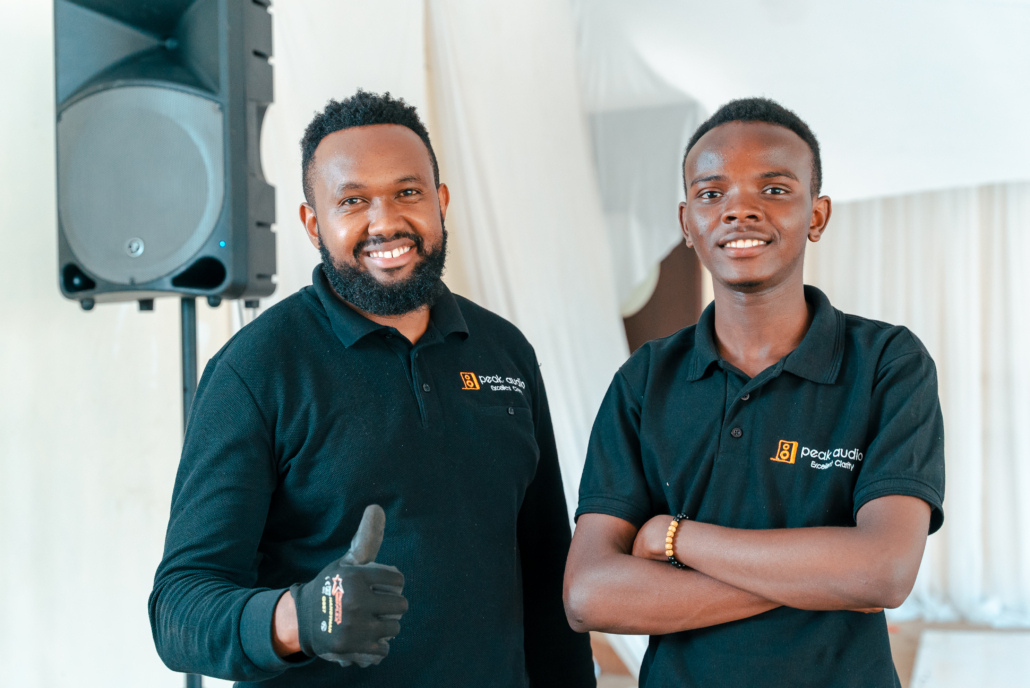
Loud and. Clear Audio
When it comes to event sound, louder doesn’t automatically mean better. While high volume can grab attention, it often leads to distortion, listener fatigue, and missed details, reducing audience engagement. True impact comes from clarity, balance, and precision, ensuring that every speech, musical note, or announcement is delivered exactly as intended. Clear audio allows your guests to stay connected, focused, and fully immersed in the experience, making your event memorable for all the right reasons.
At Peak Audio, we go beyond simply amplifying sound—we engineer every element of audio to match the unique demands of your venue, audience, and event type. From strategically placed high-quality speakers to expertly tuned equalization, our team ensures that sound reaches every corner without distortion or dead zones. Whether it’s a corporate conference, a live concert, a wedding, or an outdoor festival, our approach guarantees professional-grade sound that enhances speeches, performances, and ambient effects, creating an immersive atmosphere that captivates every attendee.
Partnering with Peak Audio means more than just hiring sound equipment—it’s gaining a team dedicated to crafting an unforgettable auditory experience. With our meticulous setup, real-time monitoring, and customized solutions, your event achieves flawless sound delivery that impresses audiences and leaves a lasting impression. Make your next gathering extraordinary: visit Peak Audio today to explore how our expertise can elevate your event, delivering clarity, impact, and an experience your guests will never forget.
Leave a Reply
Want to join the discussion?Feel free to contribute!